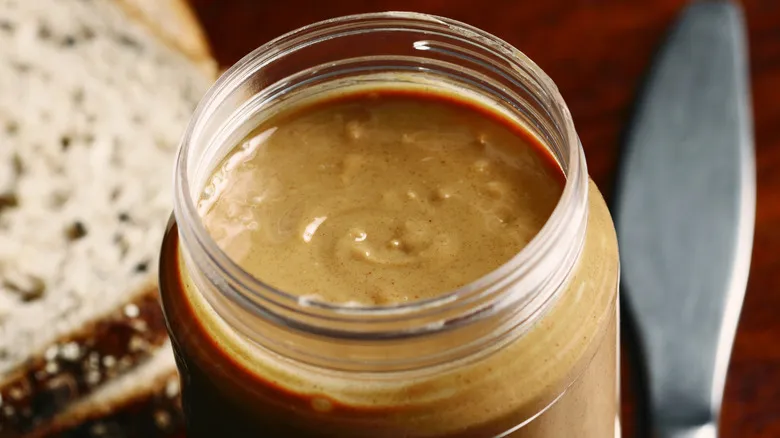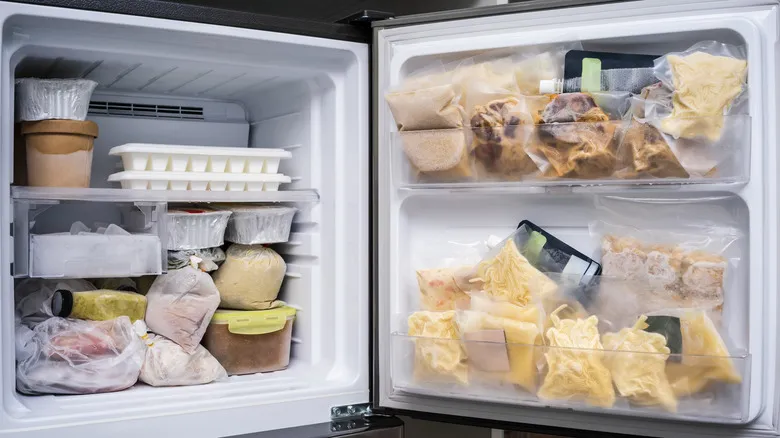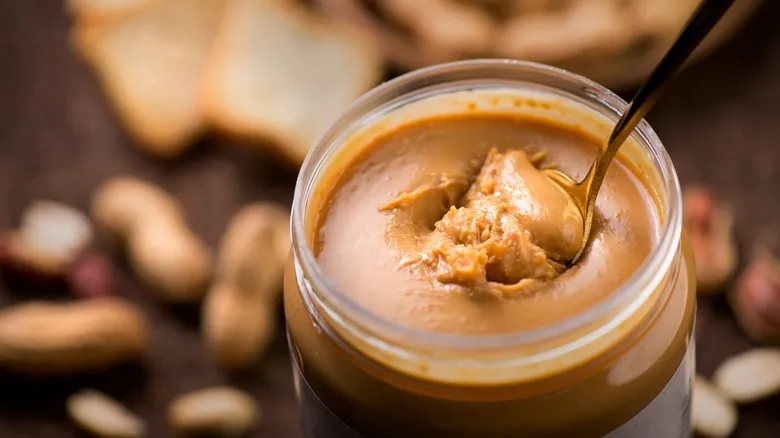Signs your natural peanut butter has gone bad

Although your jar of peanut butter will have a "Best By" date, it may not remain fresh until that time, so it's important to recognize the signs of spoilage. Identifying whether your peanut butter has gone bad is usually straightforward, as spoiled nut butter often emits a rancid odor. In the absence of that, you should also watch for visual changes. If you notice an unusual color, such as a dark brown or greenish tint, it may be spoiled. Fresh natural peanut butter should exhibit a uniform color and a pleasant nutty scent. For those who prepare their own nut butters, being aware of these indicators is essential since there won't be a "Best By" date on your jar.
Textural changes can also serve as a warning sign. Natural peanut butter tends to separate over time, so be on the lookout for significant alterations like dryness or a crumbly texture. Tasting is another effective method to evaluate freshness. Spoiled peanut butter may have a rancid, bitter, or sour flavor, so it's best to discard any jars that taste off.
Lastly, the presence of visible mold on the surface of the nut butter is a definitive indication that it should be thrown away. Even if mold is only found in a small area, it's safest to dispose of the entire jar. By being attentive to these signs and storing your peanut butter correctly, you can help ensure it remains fresh and safe to consume.
Recommended

Is It Safe To Eat Ground Beef If It Has Turned Gray?

The Worst Places In Your Kitchen To Store Potatoes

In Case Of A Power Outage, How Long Does Food Last In The Freezer?

Never Deal With Clumpy Spices Again Thanks To One Clever Trick
Next up

